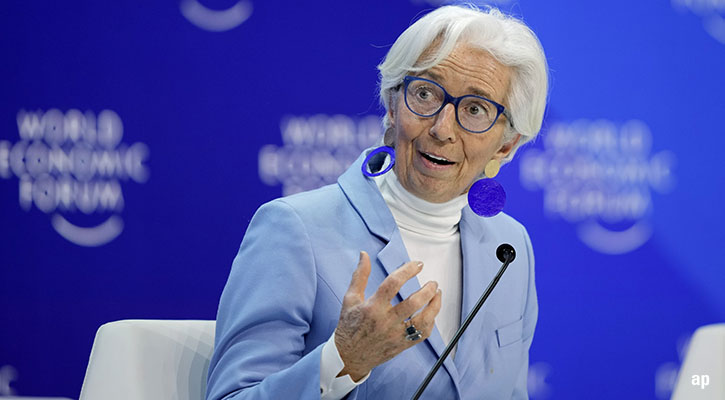For European fixed income investors, 2015 has been a disappointing year, with many bond fund categories set to end the year close to, or below, where they started. The European Central Bank’s quantitative easing program kicked off the year on an optimistic note, but disappointing global growth and commodity prices, an unfavourable supply-demand dynamic within corporate credit markets and a slew of single-name events dragged on returns. Still, some fund managers were able to make the most of a tricky year.

2015 was a bumper year for corporate bond issuers, who issued €900 billion in debt

Government Bonds: Europe's Halting Economic Recovery Continues
After a roller coaster first half of 2015, in which the 10-year German bund yield nearly grazed the zero mark before spiking to almost 1% in June, investors gradually rediscovered their appetite for European government debt in the final six months of the year. After months of tense negotiations, on July 12 the Greek government finally agreed to continue implementing the strict austerity reforms stipulated by the IMF and ECB as part of the Greek bail-out package, leading to a rally in the debt of peripheral countries like Italy and Spain. Positive fiscal news out of Italy, where budget deficit projections for 2015 came in under expectations, provided further encouragement.
At the same time, partly in response to ominous economic data from several emerging market countries, the ECB renewed its commitment to monetary stimulus measures, including an extension to the QE timeline by six months and a further slash to its overnight deposit rate to -0.30% in December. As a result, the second half of the year favoured funds with heavier exposures to peripheral and longer-dated bonds.
Within Morningstar’s EUR Government Bond category, many of the funds that were hit hardest by the rates spike in the spring are looking to end the year ahead of the pack. Neutral-rated Epsilon Fund Euro Bond and Eurizon Obbligazioni Euro, which typically hold between 40% and 60% of their assets in Italian debt, posted top-decile results through mid-December.
Other funds met with success by looking further off the beaten path: Bronze-rated Bluebay Investment Grade Euro Government Bond landed in the top quartile by overweighting the debt of Cyprus, Iceland and Slovenia, among others, which rallied in the second half of the year. Silver-rated HSBC Euro Government Bond, though it largely stuck to core European markets, also rose to the category’s top 20% by mid-December thanks to its relatively long duration compared with category peers. The fund’s slim expense ratio also helped it stand out in a year of meagre returns.
At the other end of the spectrum, Bronze-rated ESPA Bond Euro-Reserva, which typically keeps north of 50% of assets in the debt of Germany, Austria and the Netherlands, brought up the rear, finishing the first 11 months of the year in the category’s bottom decile.
Corporate Bonds: Ample Supply, Ebbing Demand
2015 was a bumper year for corporate bond issuers, who so far have issued €900 billion in debt denominated in euros, the most since 2012. For investors, 2015 has been less exciting; though corporate bonds benefited from the downward drift in government bond yields in the second half of the year, this effect has been largely offset by the glut of supply in the market. The option-adjusted spread of the Barclays Euro-Aggregate Corporate Index widened to 1.48% by the end of the third quarter—its highest level in two years.
As a result, Morningstar’s EUR Corporate Bond category is set to end the year flat to slightly negative, with a return of -0.25%.
Among the year’s best-performing corporate bond funds, many benefited from over weights to higher-yielding market segments. Bronze-rated Schroder ISF Euro Corp Bond placed in the category’s top decile. The fund’s overweight to subordinated financials and its generous off-benchmark stake in high-yield bonds helped drive returns, while its short-duration positioning shielded the fund during the spring rates sell-off. The story was similar at Bronze-rated BGF Euro Corporate Bond, which also posted top-quartile results despite a preference for US issuers, which tended to underperform their European counterparts.
Funds with higher exposures to US issuers tended to underperform, as did funds with heavier emerging markets exposures. Bronze-rated Zantke Euro Corporate Bonds, which sported an emerging-markets exposure of roughly 20% in August, has tumbled roughly 2.8% year-to-date, landing near the category’s bottom decile.
What to Watch for in 2016
The events of 2015 didn't deliver exciting returns for investors, but they did set the stage for an interesting 2016. The ramifications of the US Federal Reserve's monetary tightening program, with further rate hikes projected for the coming two years, will be forefront of many investors' minds, especially with regards to the increased borrowing costs implied for many emerging markets.
Meanwhile, despite some encouraging fiscal news in Europe during the last year, most market participants expect the ECB to increase its quantitative easing measures, including potentially adding corporate bonds to its asset purchasing program. The UK is flirting with a potential referendum on EU membership next year, which could generate significant market volatility, while dwindling liquidity continues to challenge bond investors. There are challenges ahead, and we'll be keeping a close eye on how Europe's fund managers navigate them.



























